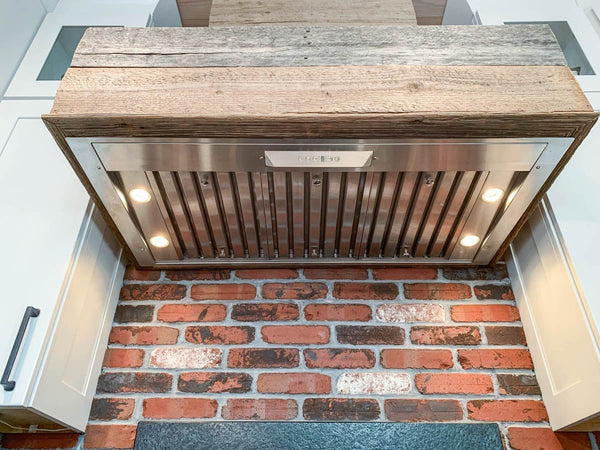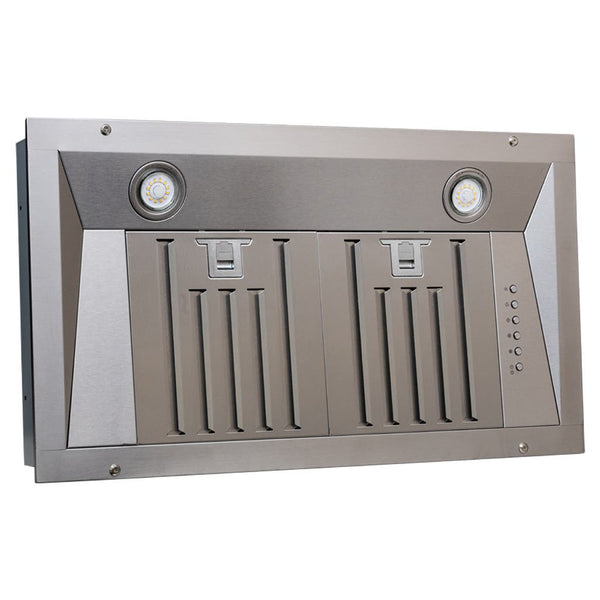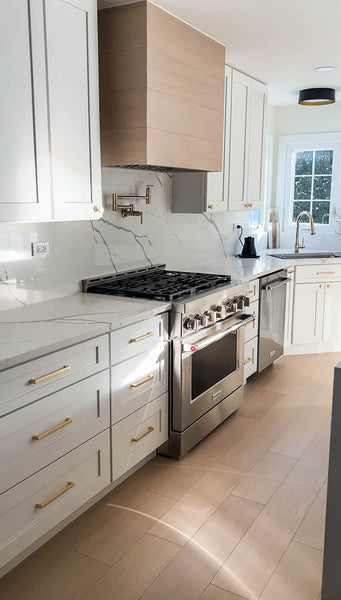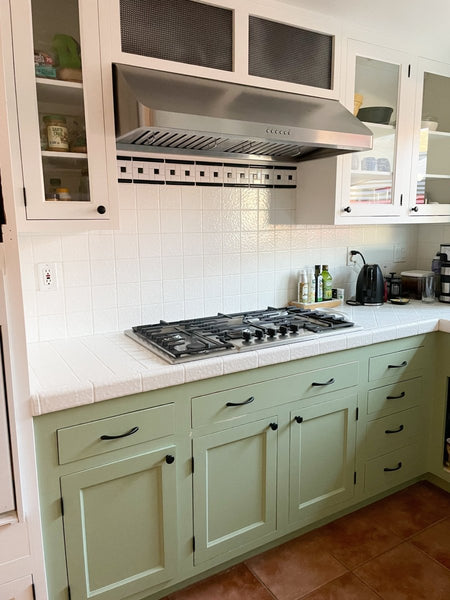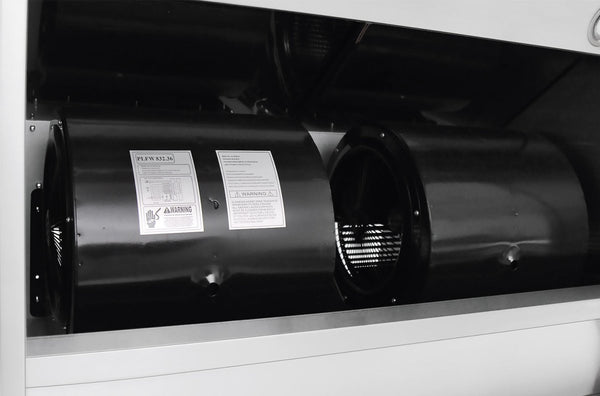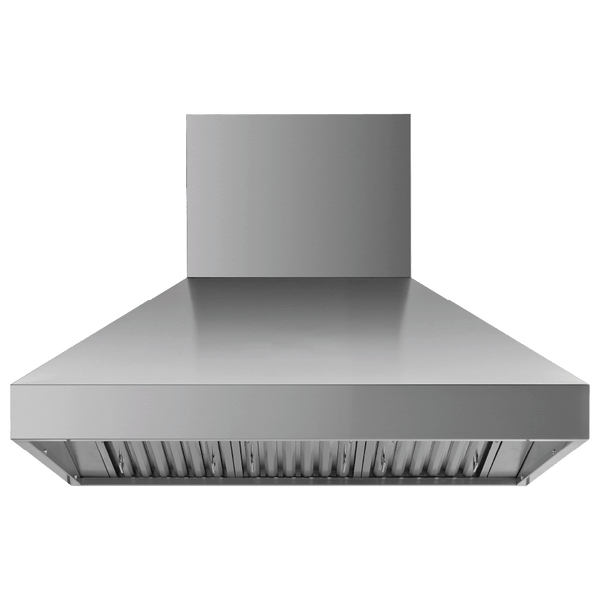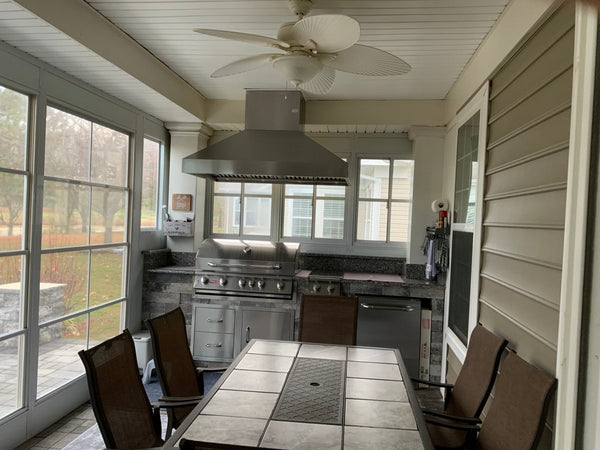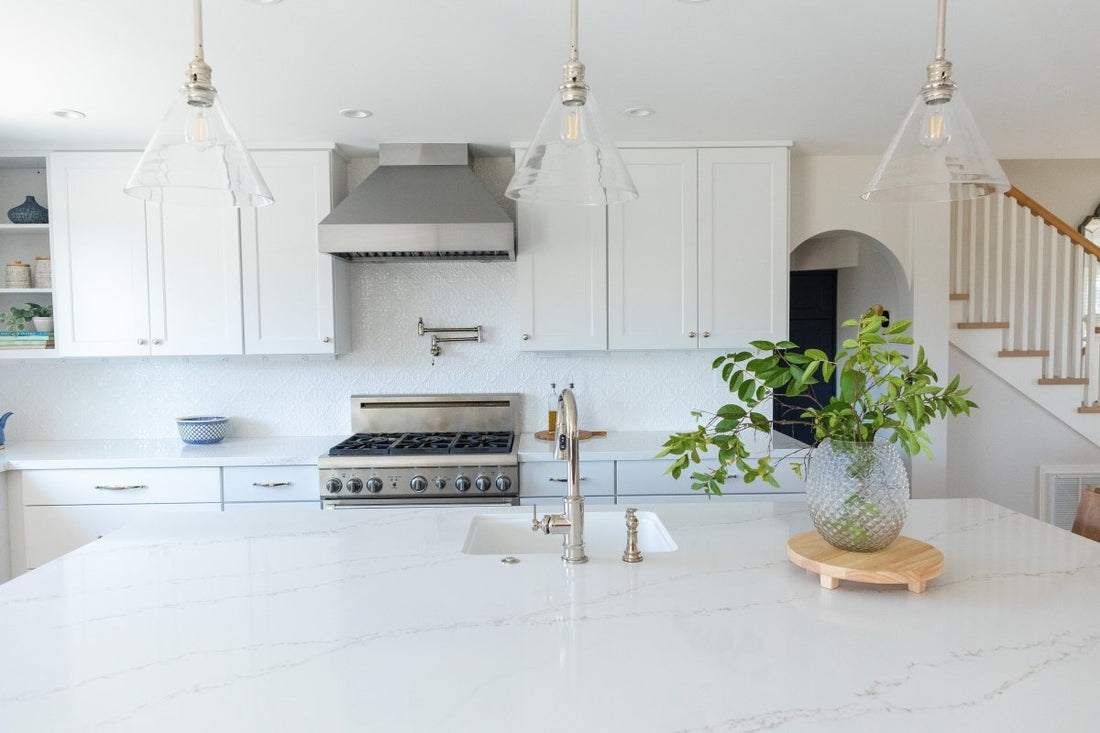Table of Contents
- Introduction: Breathe Easier in Your Kitchen
- How Does a Vent Hood Affect Airflow in Your Home?
- Three Major Reasons Why Proper Ventilation Matters
- The Experiment: Proving How Ventilation Works
- How to Ensure Your Range Hood Is Properly Vented
- Health Impacts of Poor Kitchen Ventilation
- Ducted vs. Ductless Range Hoods: A Comparison
- Related Blog Posts from Proline Range Hoods
Introduction: Breathe Easier in Your Kitchen
Without the right ventilation, your cooking fumes aren’t just a nuisance; they affect your health, waste energy, and invite moisture-related issues like mold.
In this post, we’re breaking down why proper venting isn’t just a luxury but a necessity for a healthy, efficient home. We’re drawing from expert insights (and real-life experiments) to show you exactly how air moves in your home, why proper ventilation makes such a big difference, and what steps you can take to ensure your range hood is up to the task.
How Does a Vent Hood Affect Airflow in Your Home?

Your home’s airflow is like a natural circulation system, designed to keep air fresh and balanced.
But when you start cooking, especially at high heat, you release a mix of smoke, grease, and moisture that disrupts this balance.
Without a properly vented range hood to capture and remove these emissions, they spread throughout your home—deteriorating air quality, increasing humidity, and even forcing your HVAC system to work harder to maintain a comfortable temperature.
A correctly installed and vented range hood captures the cooking by-products right at the source. It then directs them outside, preventing the pollutants from settling in your living space and ensuring that the heat generated in the kitchen doesn’t wreak havoc on your home’s overall energy efficiency.
"Proper kitchen ventilation is often overlooked but is one of the most important factors in maintaining healthy indoor air quality. It's the first line of defense against cooking pollutants." — Dr. Brett Singer, Indoor Air Quality Scientist, Lawrence Berkeley National Laboratory
Three Major Reasons Why Proper Ventilation Matters
1. Indoor Air Quality

Cooking releases more than just delicious aromas—it also emits harmful particles like grease, smoke, and even trace chemicals that can degrade indoor air quality. Breathing in these pollutants over time can lead to respiratory issues and other health concerns. A powerful, ducted range hood extracts these contaminants immediately, preventing them from circulating back into your home. Unlike ductless models that rely on filters and recirculate the air, a properly vented hood removes these particles entirely from your indoor environment.
2. Moisture Control

Every time you cook, moisture is released into the air. Without proper ventilation, this excess humidity can build up, creating a perfect environment for mold and bacteria. By efficiently removing moisture from the air, a vented range hood not only protects your surfaces and furnishings from dampness but also contributes to a healthier, more comfortable living space.
3. Energy Savings

When your kitchen retains heat from cooking, it forces your air conditioning or heating system to work overtime to balance the temperature throughout your home. A well-vented range hood helps manage and direct hot air out of the home, reducing the load on your HVAC system. This improved efficiency can translate to significant energy savings over time—keeping your home comfortable without inflating your utility bills.
The Experiment: Proving How Ventilation Works
We conducted a simple experiment to visualize the impact of proper ventilation. Here’s what we did:
Step 1: Incense in a Closed Box
- We lit a stick of incense inside a closed box to mimic how pollutants spread.
- Within minutes, the scent permeated the entire box, illustrating how contaminants can quickly fill a confined space.
Step 2: Adding a Vent Hood Simulation
- Next, we repeated the experiment with a small fan acting as a range hood, positioned to pull air out of the box.
- The incense smoke was swiftly drawn away, demonstrating how a properly vented range hood captures and removes pollutants before they have a chance to spread.
Step 3: Simulating Moisture with a Diffuser
- We then introduced a diffuser to add moisture to the box, mimicking steam from cooking.
- Without ventilation, the moisture condensed and fogged the box. However, when the fan was activated, the moisture was efficiently expelled, leaving the air clear and dry.
This experiment clearly shows how a range hood can drastically improve indoor air quality, control moisture, and even contribute to better energy efficiency by preventing unnecessary heat buildup.
How to Ensure Your Range Hood Is Properly Vented
Choose the Right Ventilation Type

There are two main types of range hoods:
Ducted Range Hoods: These are the gold standard for ventilation. They move air directly outside, ensuring that smoke, heat, and moisture are completely removed from your home.
Ductless Range Hoods: While these use filters (such as charcoal or stainless steel) to trap pollutants before recirculating air back into the room, they aren’t as effective at completely removing contaminants.
Use the Correct Duct Size and Material
Duct Material: Use smooth, rigid metal ducts rather than flexible ones. Rigid ducts reduce resistance, ensuring optimal airflow and preventing grease buildup.
Duct Size: For most installations, ducts ranging from 6” to 10” are ideal. Larger CFM (cubic feet per minute) ratings require appropriately sized ducts to maintain efficiency.
Vent to the Outside

It’s crucial to ensure that your range hood vents directly to the exterior. Venting into an attic or other confined space can lead to additional problems such as moisture accumulation, mold, and even structural damage. Always opt for an external venting solution to keep your indoor environment safe and healthy.
Run Your Range Hood During Cooking
A common mistake is to only turn on the hood after smoke becomes visible. Instead, start your range hood before you begin cooking. This preemptive action creates a continuous airflow that immediately captures any pollutants as soon as they are released.
Regular Maintenance is Key
Clean Your Filters: Stainless steel and baffle filters are highly effective at capturing grease and should be cleaned regularly. Many baffle filters are dishwasher safe, making maintenance easy.
Inspect Ducts: Over time, ducts can accumulate grease and debris. Regular inspections and cleanings ensure that your range hood maintains its efficiency.
Health Impacts of Poor Kitchen Ventilation
Inadequate kitchen ventilation poses several specific health risks that many homeowners may not be aware of:
Gas Cooking Emissions
Gas stoves and ovens release nitrogen dioxide (NO₂), carbon monoxide (CO), and formaldehyde. Studies have linked long-term exposure to these pollutants with increased risk of respiratory conditions, particularly in children.
Particulate Matter
Cooking, especially frying and high-heat methods, produces fine particulate matter (PM2.5) that can penetrate deep into the lungs. These particles have been associated with cardiovascular problems and decreased lung function.
Volatile Organic Compounds (VOCs)
Cooking oils at high temperatures release VOCs that can cause eye, nose, and throat irritation, headaches, and even damage to the liver, kidneys, and central nervous system with prolonged exposure.
Increased Allergy and Asthma Symptoms
Poor ventilation allows cooking particles to settle on surfaces throughout your home, potentially triggering or worsening allergy and asthma symptoms.
"In our research, we've found that cooking without adequate ventilation can produce indoor air pollution levels that would be illegal if they were measured outside. A properly functioning exhaust hood is essential for reducing these exposures." — Professor Jeffrey Siegel, University of Toronto, Department of Civil Engineering
Ducted vs. Ductless Range Hoods: A Comparison

"I always recommend ducted range hoods to my clients whenever possible. While the installation is more involved, the benefits to indoor air quality and the home's overall health far outweigh the initial investment." — Mark Johnson, Certified Kitchen Designer, NKBA
Related Blog Posts:
- Do Range Hoods Have to Be Vented Outside?
- How to Vent a Range Hood on an Interior Wall
- Range Hood Duct Sizing Guide
-
CFM Calculator: How Many CFM Do I Need for My Range Hood?
Shop Now

